PROTECT YOUR DNA WITH QUANTUM TECHNOLOGY
Orgo-Life the new way to the future Advertising by AdpathwayPerennials bring seasons of recurrent color, texture, and landscape value, from pollinator resources to soil stabilization to seeds for songbirds. The workhorses of the garden ensure something interesting is always going on, across seasons and growing conditions.
But to get to this lasting interest, we often have to wait a couple of years to realize full bloom, especially as we grow perennials from seed. There’s the adage that perennials “sleep, creep, and leap,” referring to their first, second, and third growing seasons. It’s in the third year that many established specimens bring their full glory.
In the first year, the durable performers direct much of their energy into developing sturdy root systems. It’s this foundation that sustains the plants across seasons. They’ll put on leafy growth and maybe even a few blooms, with more to follow in the second growing season. There are also short-lived perennials and biennials, which show leafy growth the first season to prepare for flowering, seeding, and dying back in the second year.
With nursery starts, you’ll likely get earlier blooms as the perennial is further along in its growth cycle. From seed, foster the tender seedlings the first year, and look forward to easy color in the following seasons. The investment (and patience) pays off with the extended performance of second-year bloomers.
Rocky Mountain Blue Columbine

Rocky Mountain Blue Columbine

Russell Blend Lupine Seeds

The Watchman Hollyhock Seeds
Columbine
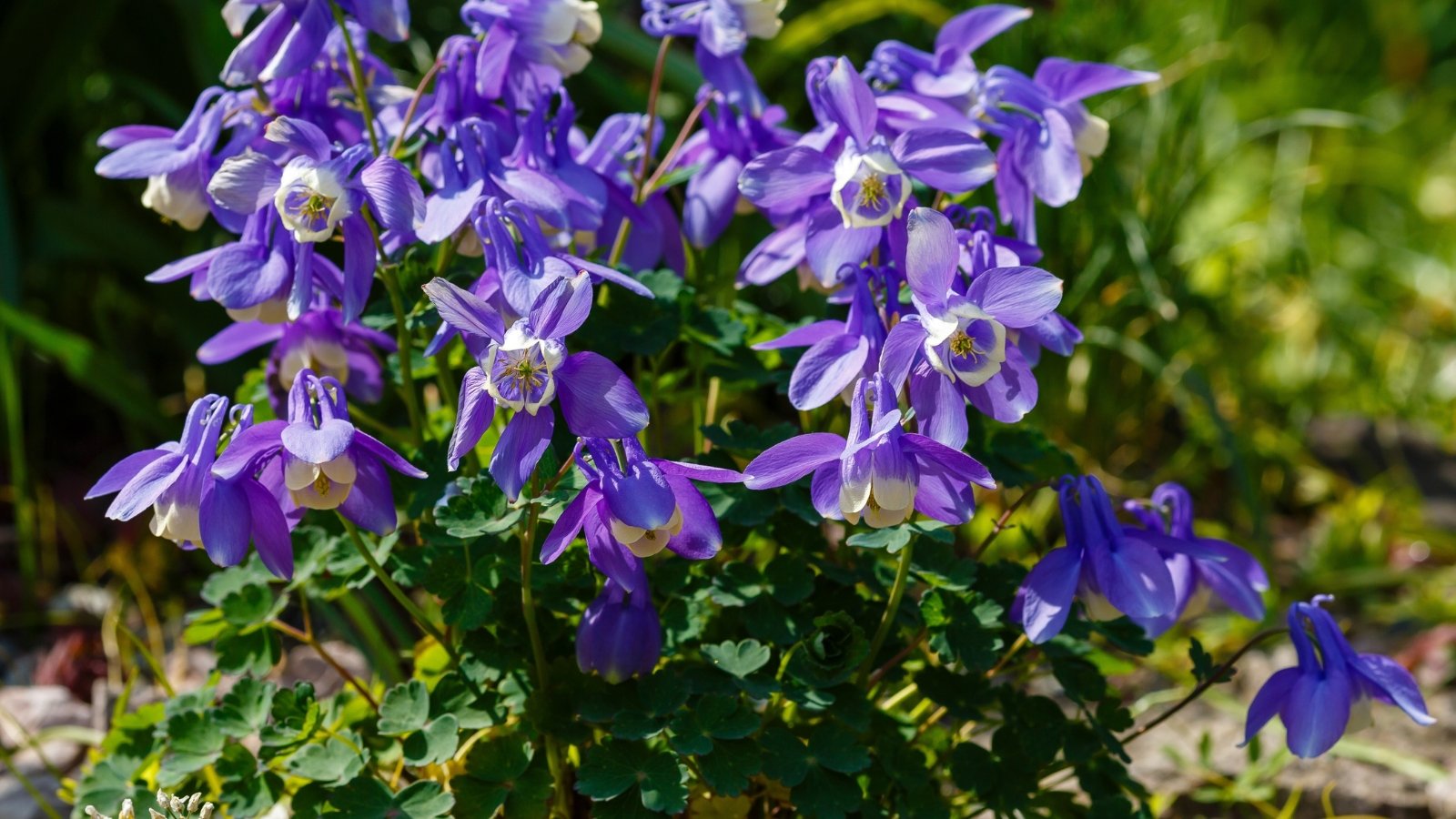 Birds snack on seeds after a summer flower show.
Birds snack on seeds after a summer flower show.Columbine is a graceful North American native wildflower with pendant blooms. Ornamental with spurs, bright petals, and stamens, the flowers suspend delicately from slender stems. While their blooms offer a delicate look, Aquilegia is a rugged, cold-hardy perennial that grows in challenging situations. The native species and their many cultivars are a fit in woodland, rock, and cottage gardens as well as pollinator and wildflower arrangements.
Columbines emerge after cold winters with attractive compound leaves and a mounding form. The nodding blooms appear soon after and range from rich red and yellow to soft blues, purples, and pinks. Hummingbirds frequent the tubular spurs for nectar, and birds feed on the seeds in the fall.
The short-lived perennials naturalize in their optimal growing conditions through underground stems and reseeding. They tolerate varying conditions, but regular moisture shows the most vigorous growth and flowering. Protect them from the intense afternoon sun to avoid leaf burn. Light shade also extends flowering.
Lupine
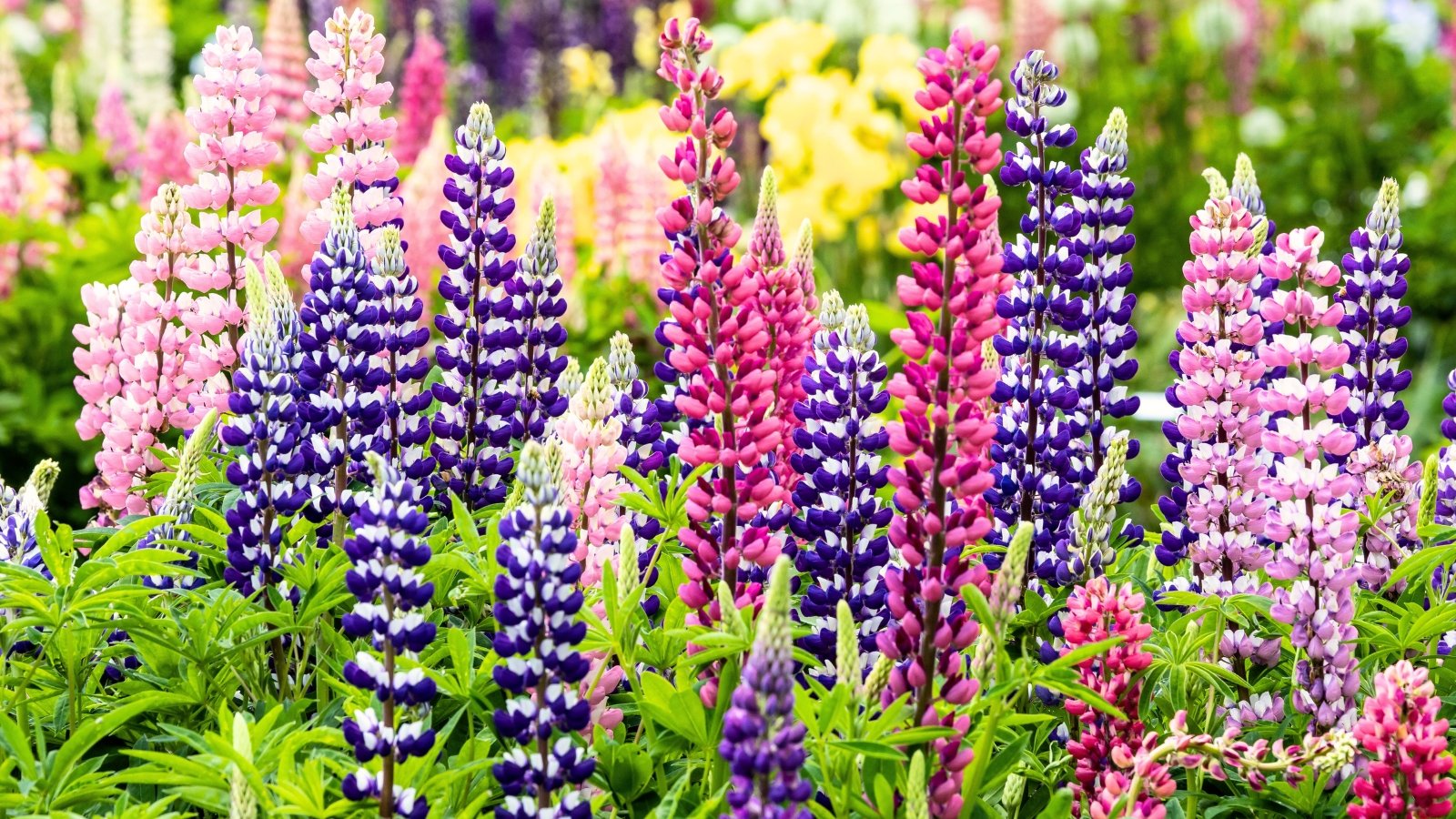 Lupines self-seed beautifully.
Lupines self-seed beautifully.Lupine enchants with bell blooms that crowd upright stems in blue, purple, pink, white, and yellow. The Lupinus genus holds over 300 species, with many native to North America and the Western region, in particular. In addition to the showy bloom spikes, their blue-green palmate leaves form an attractive base.
The natives and their cultivars are easy to grow from seed with a few steps toward the best germination. Start them in late fall, winter, or early spring to enjoy the short-lived perennials in their second year. As they self-seed, you’ll have years of recurrent blooms.
Peony
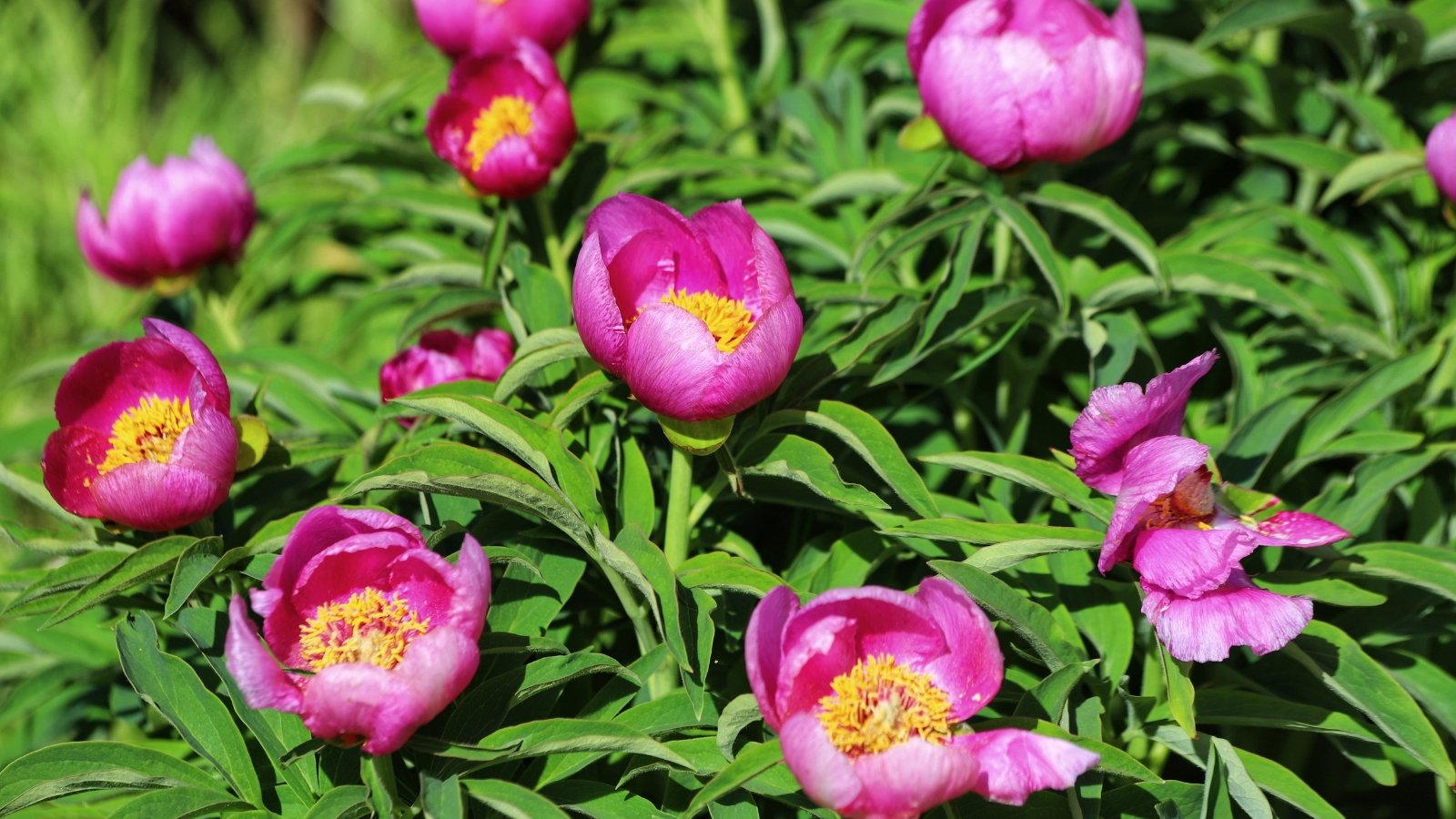 Thick roots dig deep before showing off their flowers.
Thick roots dig deep before showing off their flowers.The beloved peony bears hefty, fully-petaled, sweetly fragrant blooms. The cold-hardy perennials are long-lived, reliable performers in climates with mild summers. They bloom once a season from late spring to early summer. From the common garden peony to tree peonies to woodland and Itoh types, there’s a peony to meet varying exposures and situations.
Peonies are slow to establish and have extensive roots. Newly transplanted and young plants can take a year or more to settle in, and even two or three years to bloom. Growing them from tubers gives a head start, but peonies from seed can take four or five years to develop buds.
Once they’ve settled in, they’re sensitive to transplant disturbance. Sometimes, it’s necessary to move them, like to a sunnier spot, if low lighting is hindering growth or flowering. But it can delay blooming for a couple of years.
Foxglove
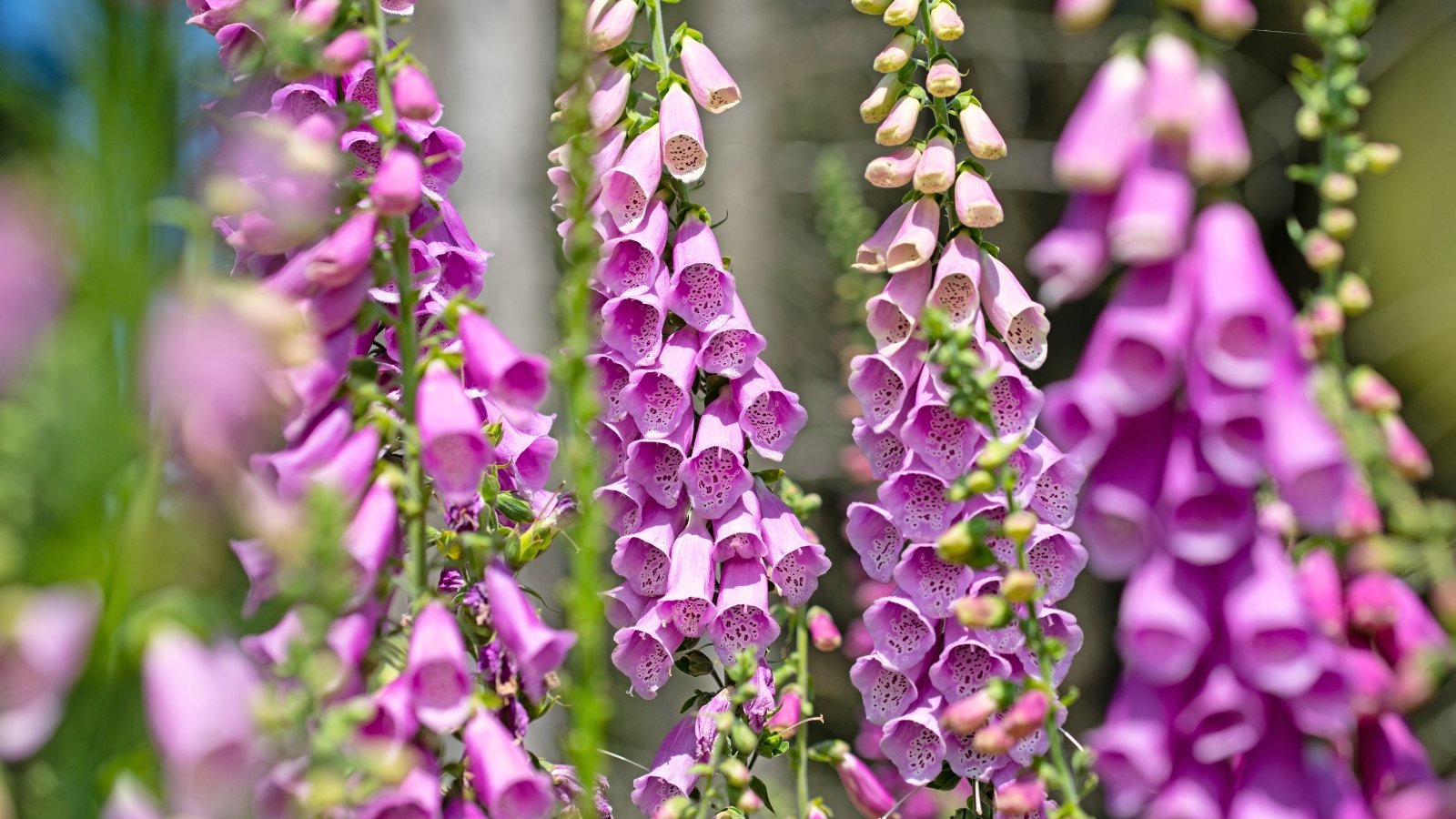 Cool seasons bring their best show of fluttery petals.
Cool seasons bring their best show of fluttery petals.Foxgloves produce lines of bell flowers on tall, sturdy stems. Blossoms in purple, rose, peach, and creamy white often have freckled throats and make the perfect nap spot for busy bees who wriggle in for nectar and pollen.
The cold-hardy biennials or short-lived perennials bloom in early summer in cool climates and put on a showy spring display in warm climates until temperatures rise. In areas with hot summers and mild winters, treat them as cool-season annuals.
Foxgloves produce a clump of leathery basal leaves. After flowering and with warm weather, leaves may turn yellow and take on a worn, ragged look. Pluck the plants from the arrangement and infill with a heat-loving selection, or allow other perennials to take over.
Bleeding Heart
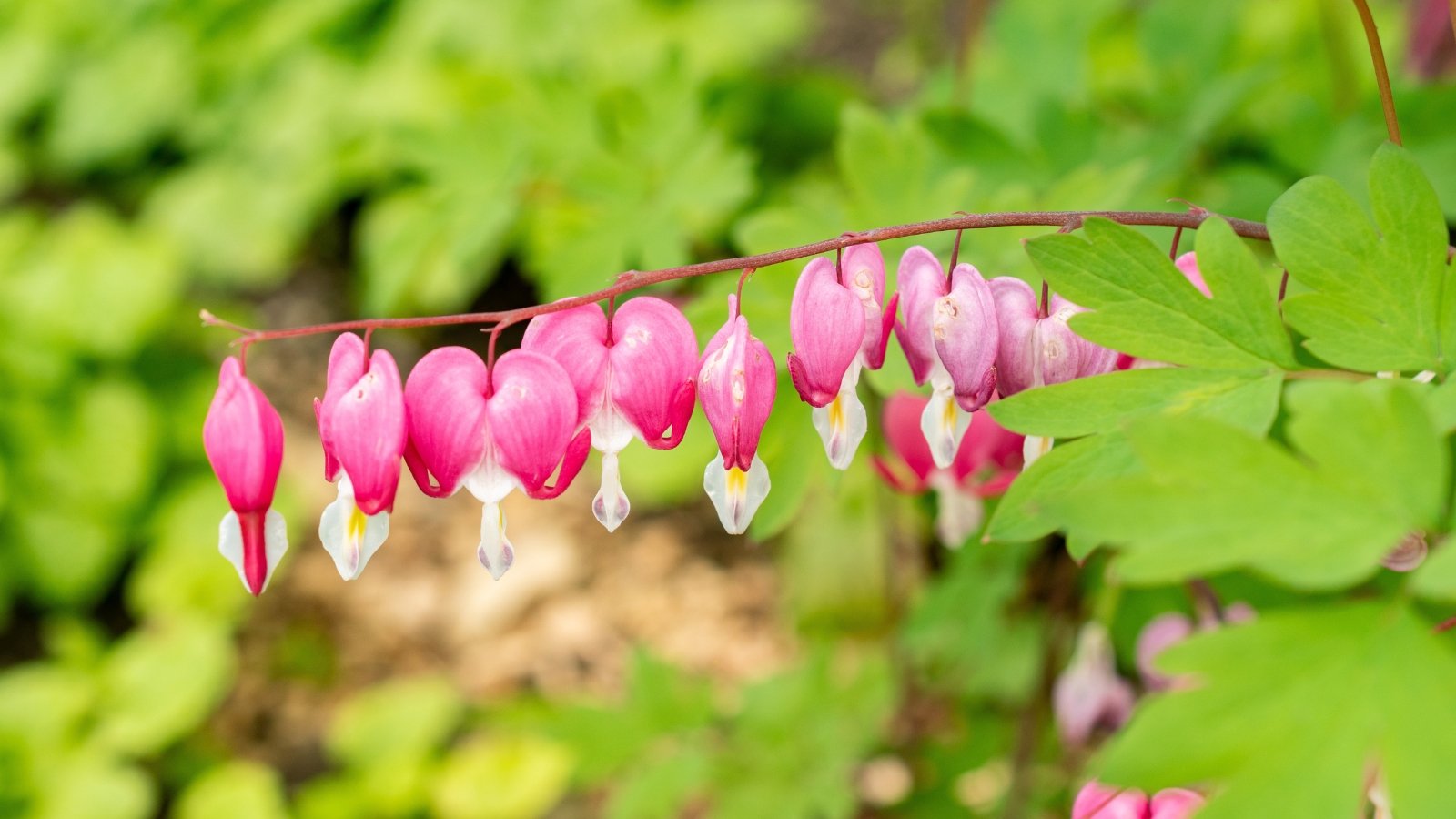 Wait patiently, and the garden rewards with hanging hearts.
Wait patiently, and the garden rewards with hanging hearts.Bleeding heart delights in the woodland garden with heart-shaped, pendulous flowers. The puffy blooms in pink, fuchsia, and white hang from slender stems. With species native to eastern North America and Asia, Dicentra and its cultivars adapt well to dappled and canopied situations.
The perennial self-sows and takes two to three years to flower when it does. The seedlings are sensitive to transplant disturbance, and moving them can delay flowering by another year.
Look for wild bleeding heart (Dicentra eximia), a North American native, with suspended pink hearts. The finely cut foliage is ferny and feathery and withstands drier conditions once established.
Hollyhock
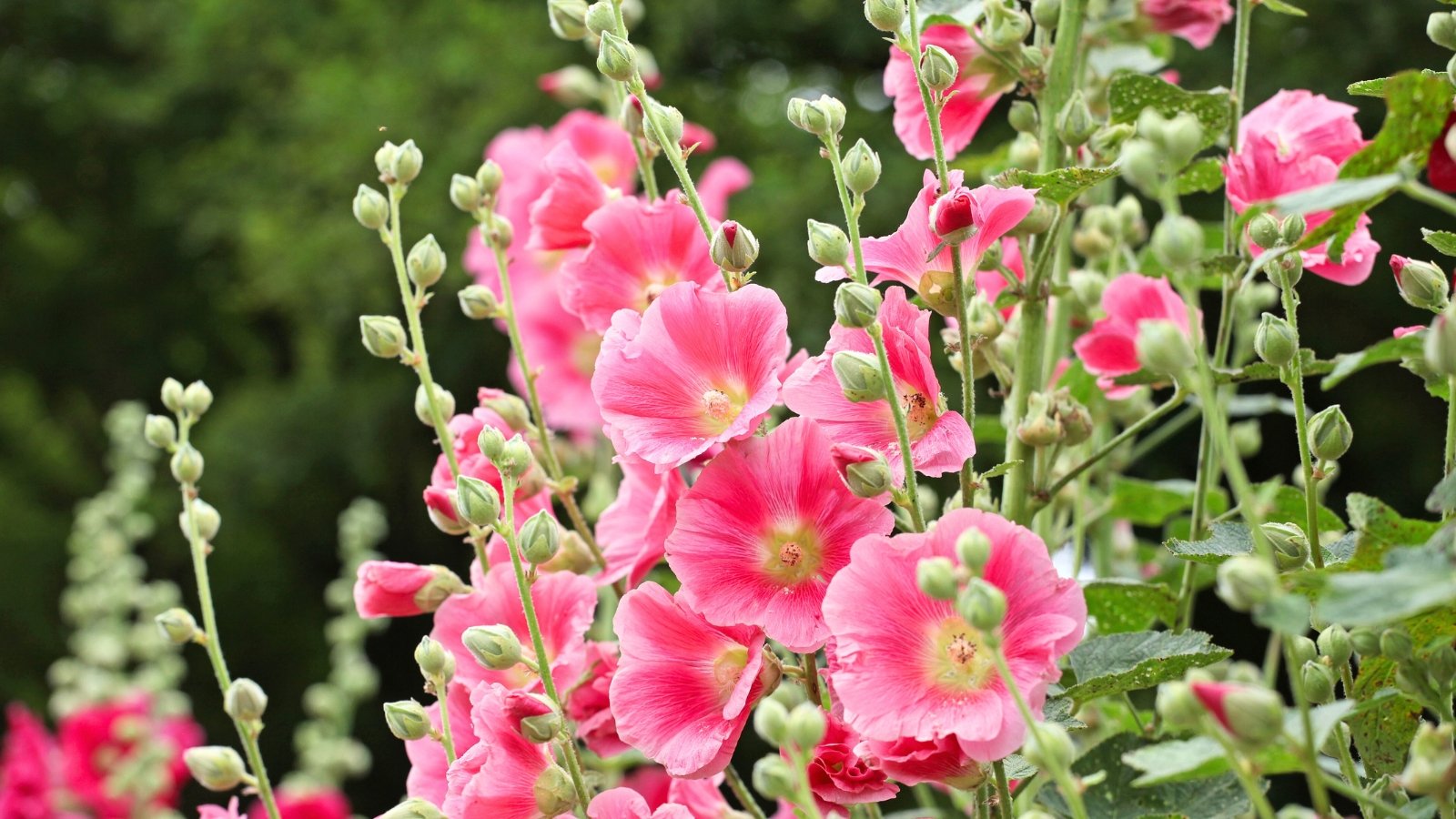 Flower spikes bring cottage garden magic to any fence line.
Flower spikes bring cottage garden magic to any fence line.Hollyhocks are nostalgic biennials or short-lived perennials with stunning blooms along tall, straight stems. The dramatic back-of-the-border bloom spikes rise in their second summer.
While some varieties reach great heights, others remain more compact. Those with tall stalks benefit from staking and wind protection, while shorter varieties are self-supporting. Though blooming for only a season, hollyhocks are worth growing for their statuesque appeal, both in the landscape and in the vase.
Hollyhocks grow quickly from seed in the warm season and self-sow to continue the seasons of growing and flowering. Because they reseed so vigorously, hollyhocks are invasive in some areas.
Clematis
 Support clematis well, and watch flowers dance in the breeze.
Support clematis well, and watch flowers dance in the breeze.Clematis is a long-lived flowering vine and a favorite for its spring to summer show. With over 250 species and thousands of cultivars, varieties boast numerous colors, sizes, foliage, and flowering times. In striking hues like violet, blue, scarlet, blush pink, and white, there’s a clematis for every palette
Given the best siting and cultural conditions, clematis are mostly low-maintenance. They’re examples of the three-year perennial rule, where they leap into graceful, full flower by the third growing season. Clematis climbs on vertical supports for high visual interest and in pots as dramatic focal points, making it a fit even for small spaces. Opt for native species to avoid commonly invasive ones.
Baptisia
 From spring bloom to winter pods, the beauty of baptisia never quits.
From spring bloom to winter pods, the beauty of baptisia never quits.Baptisia, or false indigo, produces spikes of pea-like blooms in spring and summer. Its blue-green foliage is soft, full, and attractive all season. After the flowers fade, dark seed pods emerge to add winter interest.
Baptisia is native to the eastern U.S., and the straight species is highly ornamental, with numerous spikes covered with blue-purple, lupine-like flowers. Cultivars in sky blue, purple, white, and yellow bring a prolific display in denser forms.
A Perennial Plant Association award-winner, baptisia is long-lived and an easy landscape performer. It spends its first season developing hardy roots and shines in its third year. Native bees and bumblebees appreciate tucking into each bloom.
Brown-Eyed Susan
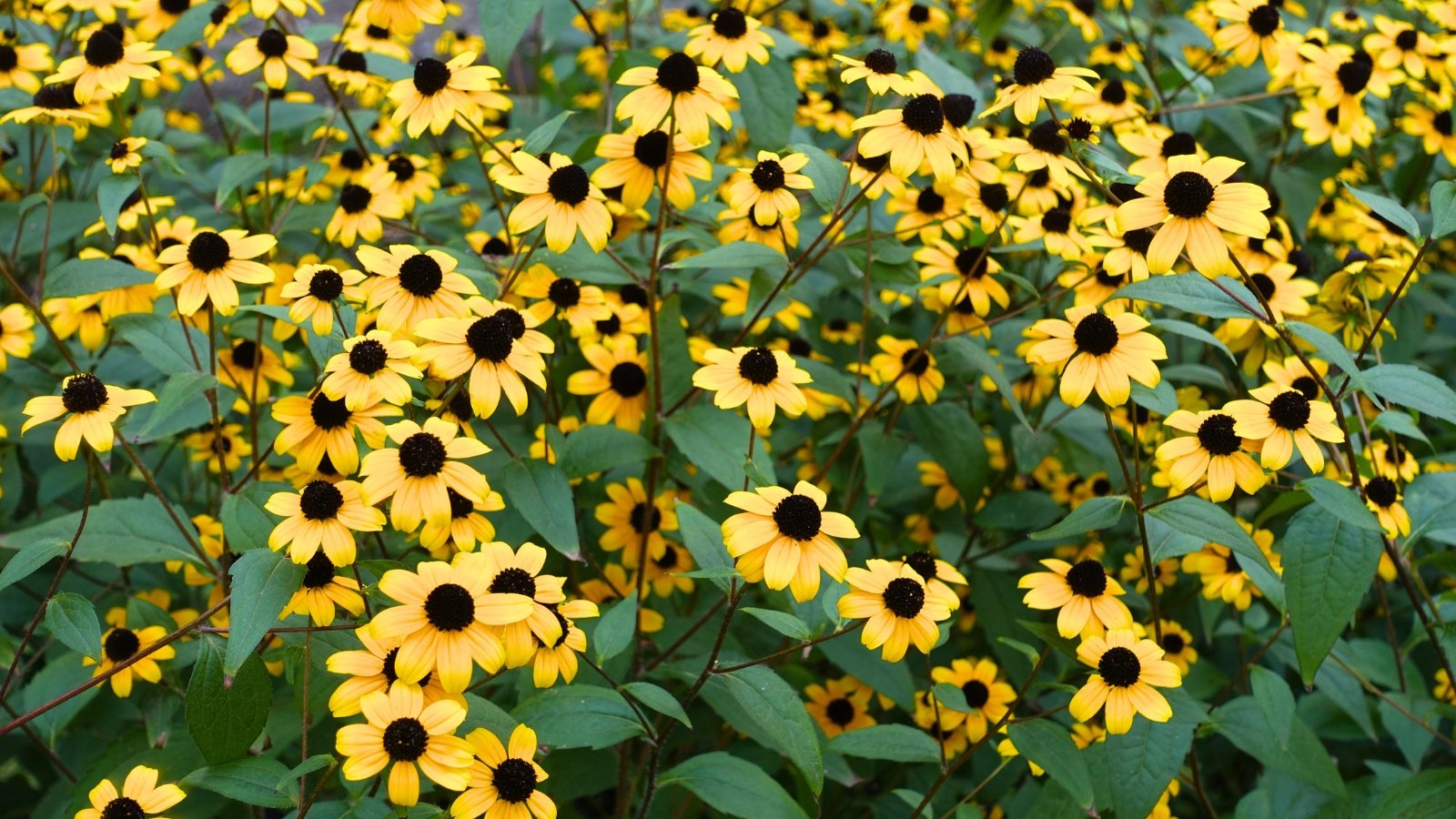 Small sunny flowers with centers that darken like dusk.
Small sunny flowers with centers that darken like dusk.Brown-eyed Susan is similar to the well-known black-eyed Susan (R. hirta) but with a later, longer bloom time and smaller flowers. Sunny ray flowers are one to two inches across with black button centers that fade to brown. The blanket of bright yellow blooms adds color in late summer until hard frost. Enjoy the multi-branched stems in fresh florals and dried arrangements in autumnal tones.
R. triloba is low maintenance, grows across conditions, and is drought-tolerant once established. The short-lived perennials naturalize through self-seeding and propagate easily with direct sowing. They’ll develop roots and leafy growth in the first year, and maybe a few flowers, but take until the second year for full-flowering glory.
Hardy Geraniums
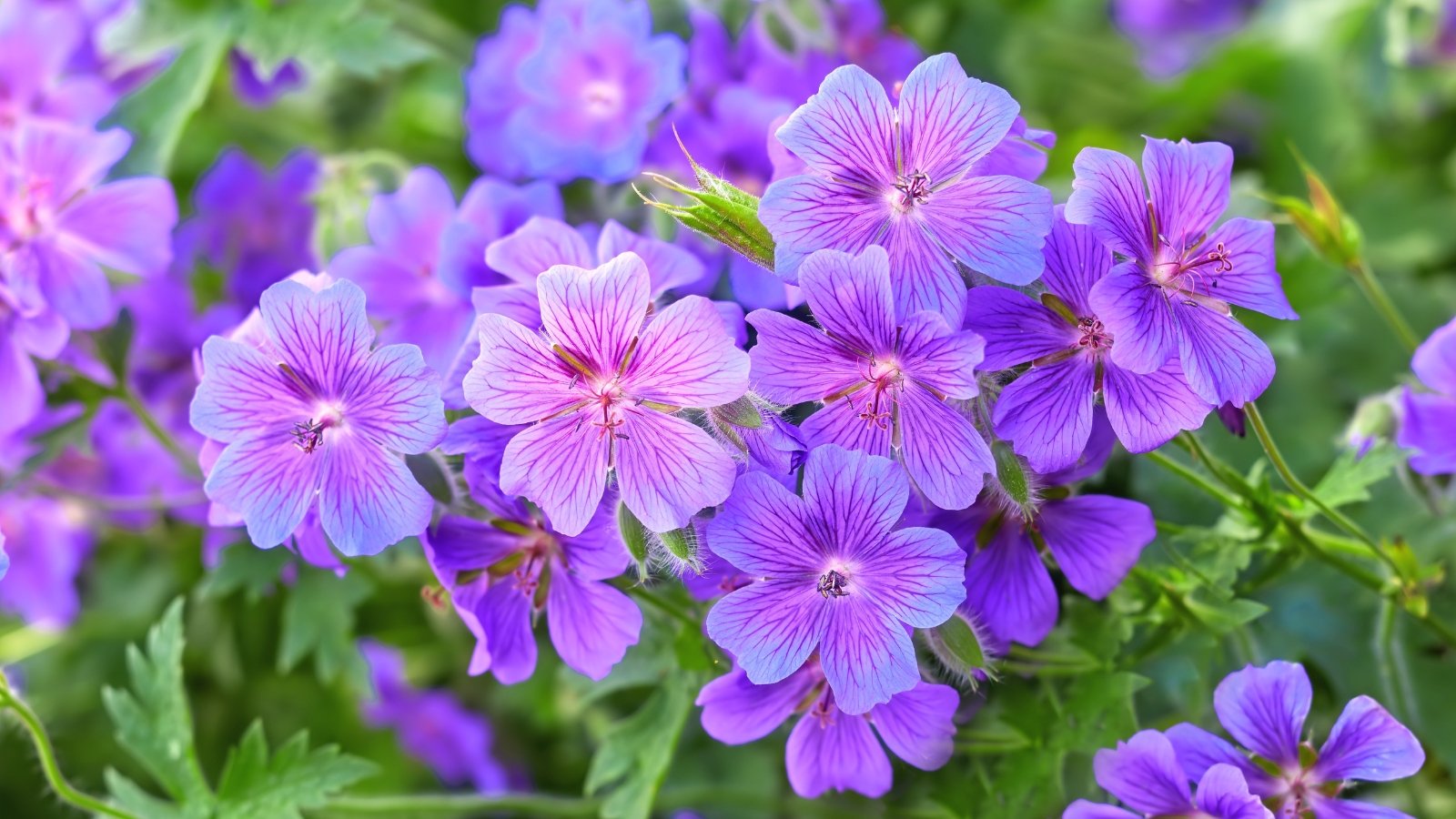 A quiet showstopper that fills spaces without crowding others.
A quiet showstopper that fills spaces without crowding others.Hardy geraniums, or cranesbill, have softly mounding, trailing stems and delicate saucer blooms. Flowering begins in spring and, for many varieties, continues intermittently through frost. In dark blue to light periwinkle and magenta, violet, white, and pink, the species and their cultivars brighten the border. They’re also a rich source of nectar and pollen for bees and other beneficial insects.
Hardy geraniums are adaptable and naturalize under optimal conditions. They spread by rhizome and some by seed, but aren’t weedy or aggressive. Relatively slow-growing, those from seed can take three to five years to flower. Many hybrids are sterile, resulting in a longer flowering season without seed production. These propagate through cuttings, or get a head start with nursery specimens.
Phlox
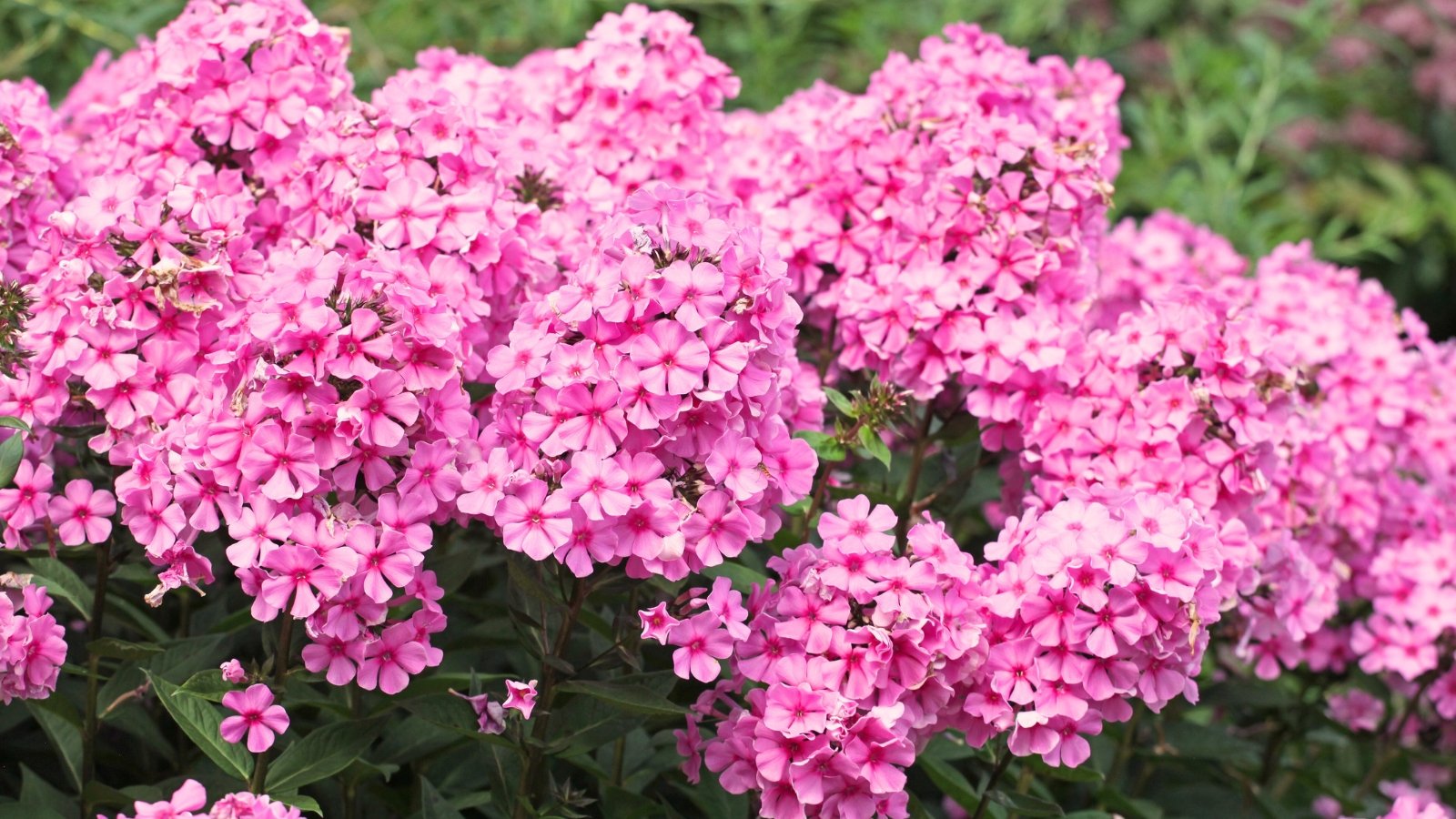 Rich soil and good air mean stronger, healthier flower displays.
Rich soil and good air mean stronger, healthier flower displays.Perennial phlox are historic favorites that bring high color in spring through fall on upright or spreading stems, depending on the variety. Whether spring or summer bloomers, the pollinator favorites delight with rich hues and a sweet fragrance. From tall garden phlox to woodland to creeping forms, many species are native to the eastern U.S., with cultivars bred for disease resistance and exceptional flowering.
While annual phlox blooms and flowers readily in the first season, perennial species take longer to develop. From seed, the perennials take two to three years to bloom.
For best growth, phlox needs organically rich, well-drained soils. Good air circulation, proper spacing, and resistant varieties help prevent mildew diseases.


 2 weeks ago
16
2 weeks ago
16





















 English (US) ·
English (US) ·  French (CA) ·
French (CA) ·